
How to Use SIM 800A: Examples, Pinouts, and Specs
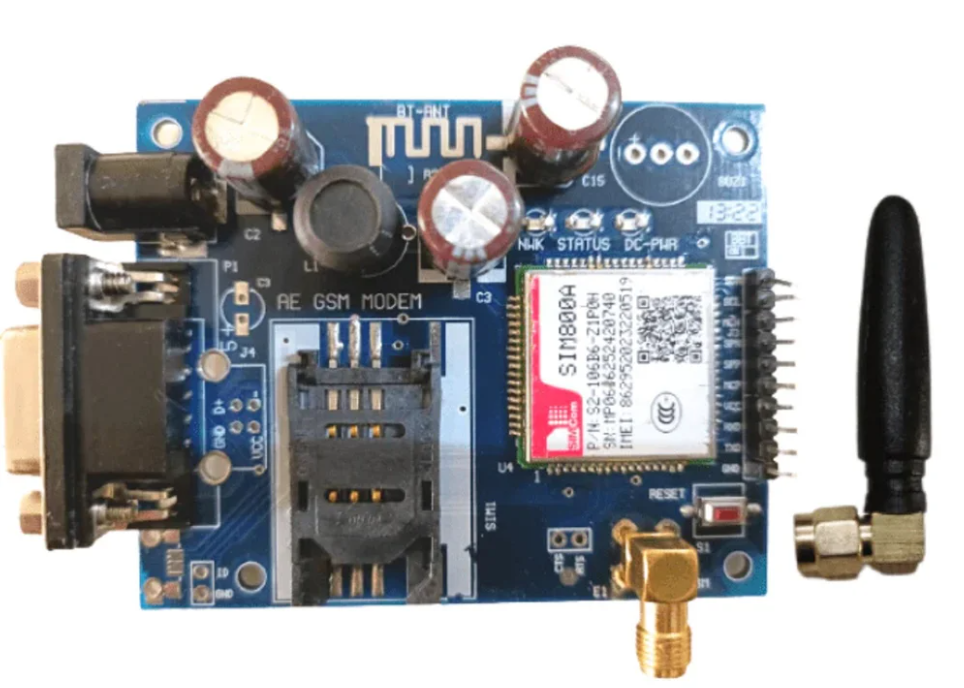
 Design with SIM 800A in Cirkit Designer
Design with SIM 800A in Cirkit DesignerIntroduction
The SIM 800A is a GSM/GPRS module manufactured by SIMCOM (Part ID: S2-10761-Z1P1K). It is a compact and reliable solution for enabling communication over mobile networks. The module supports SMS, voice calls, and GPRS data transmission, making it a versatile choice for a wide range of applications. Its small form factor and low power consumption make it particularly suitable for IoT devices, remote monitoring systems, and embedded communication solutions.
Explore Projects Built with SIM 800A
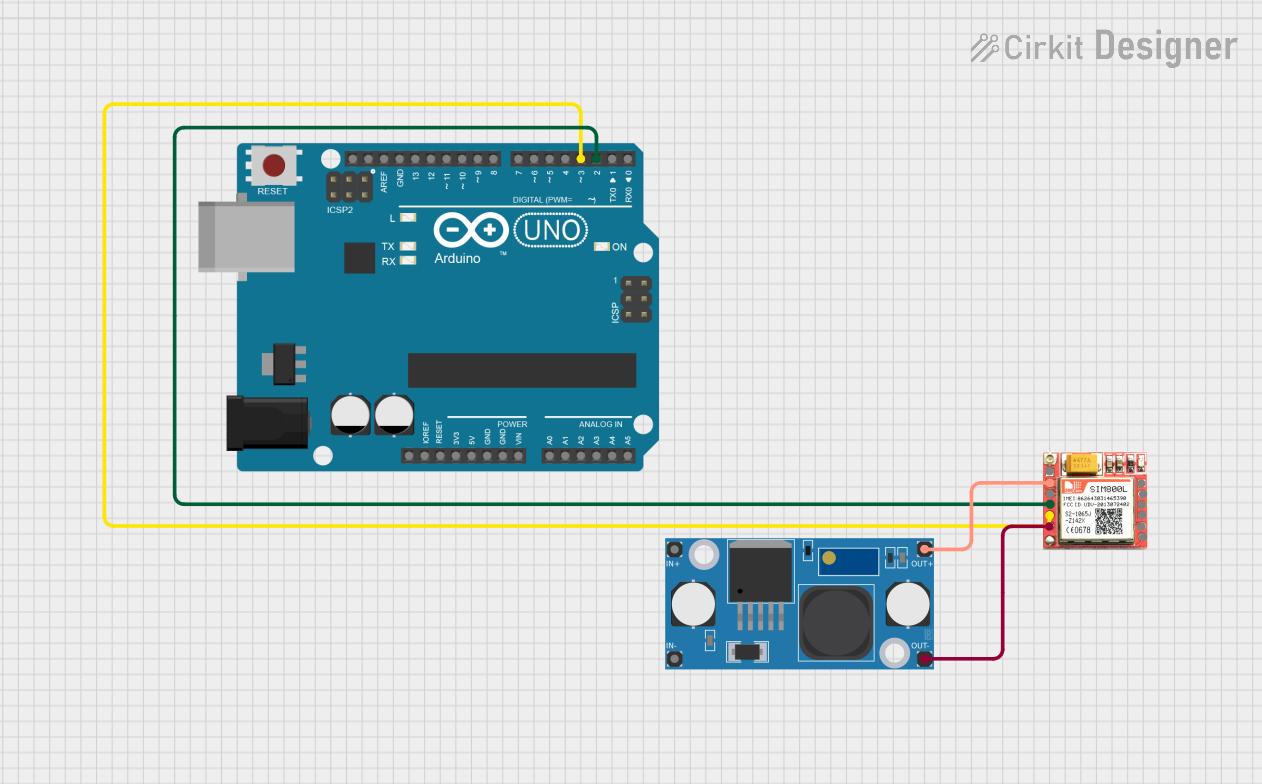
 Open Project in Cirkit Designer
Open Project in Cirkit Designer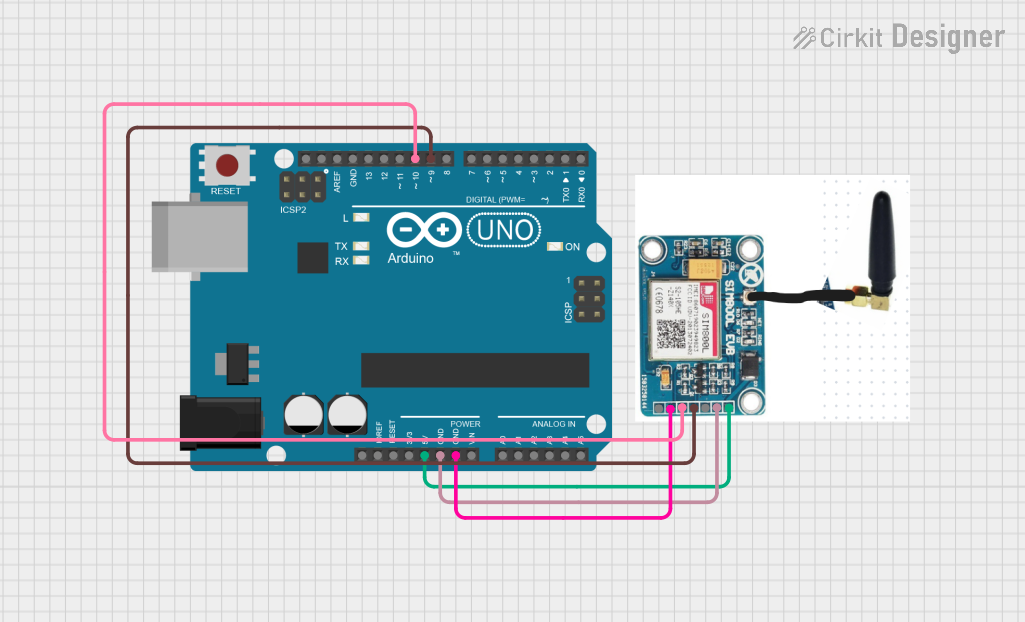
 Open Project in Cirkit Designer
Open Project in Cirkit Designer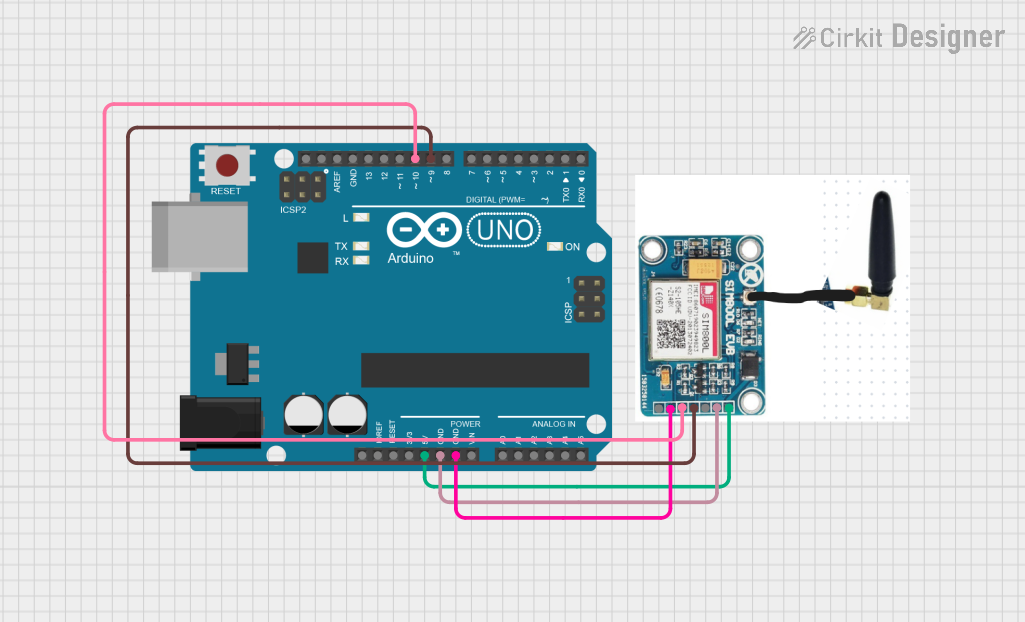
 Open Project in Cirkit Designer
Open Project in Cirkit Designer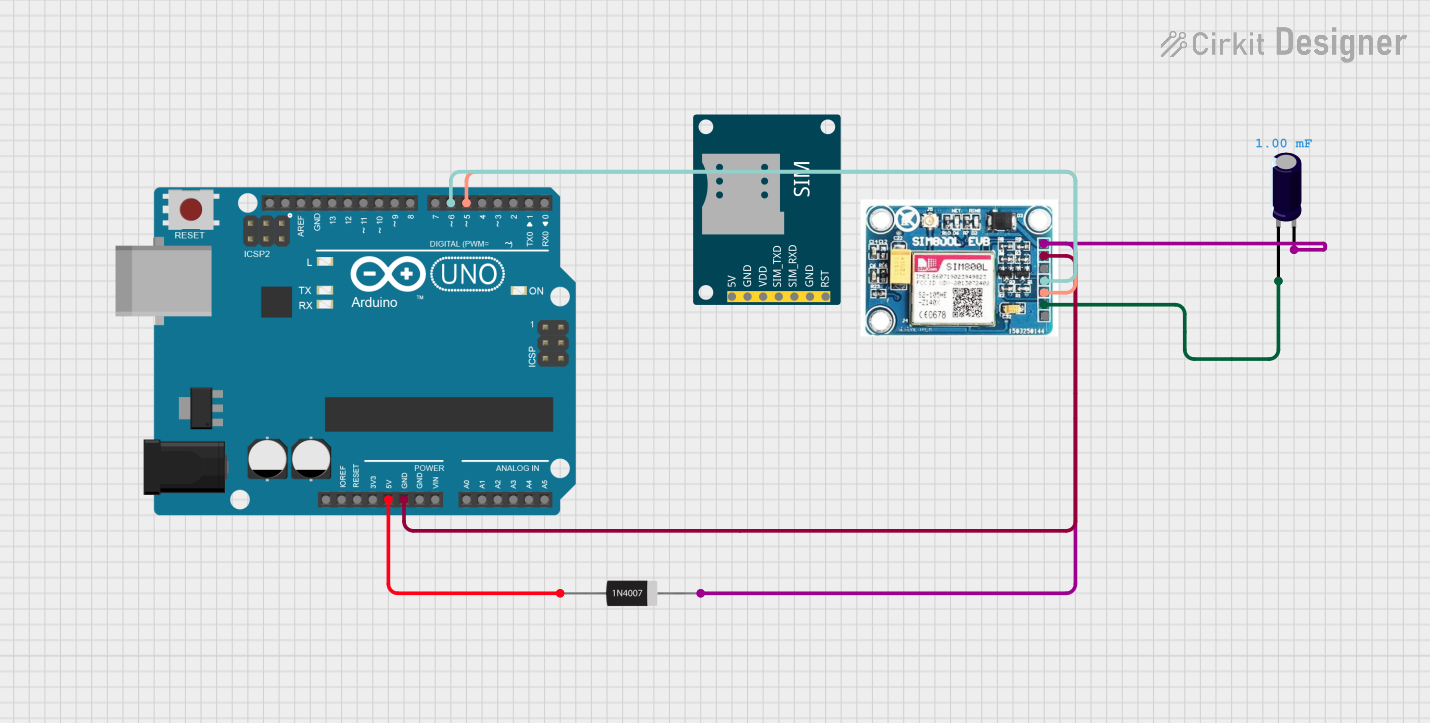
 Open Project in Cirkit Designer
Open Project in Cirkit DesignerExplore Projects Built with SIM 800A

 Open Project in Cirkit Designer
Open Project in Cirkit Designer
 Open Project in Cirkit Designer
Open Project in Cirkit Designer
 Open Project in Cirkit Designer
Open Project in Cirkit Designer
 Open Project in Cirkit Designer
Open Project in Cirkit DesignerCommon Applications
- Internet of Things (IoT) devices
- Remote monitoring and control systems
- Smart home automation
- Vehicle tracking and fleet management
- SMS-based alert systems
- Wireless data transmission in industrial applications
Technical Specifications
Key Technical Details
| Parameter | Specification |
|---|---|
| Manufacturer | SIMCOM |
| Part ID | S2-10761-Z1P1K |
| Network Support | GSM/GPRS (850/900/1800/1900 MHz) |
| GPRS Multi-slot Class | Class 12 |
| GPRS Mobile Station Class | Class B |
| Supply Voltage Range | 3.4V to 4.4V (Typical: 4.0V) |
| Power Consumption | Idle: ~1.2mA, GPRS Transmission: ~350mA |
| Operating Temperature | -40°C to +85°C |
| Dimensions | 23mm x 23mm x 3mm |
| Communication Interface | UART (up to 115200 bps) |
| SIM Card Support | 1.8V/3.0V |
| Voice Features | Support for voice calls and DTMF |
| SMS Features | Text and PDU modes |
Pin Configuration and Descriptions
The SIM 800A module has multiple pins for power, communication, and control. Below is a summary of the key pins:
| Pin Number | Pin Name | Description |
|---|---|---|
| 1 | VCC | Power supply input (3.4V to 4.4V) |
| 2 | GND | Ground |
| 3 | TXD | UART Transmit Data |
| 4 | RXD | UART Receive Data |
| 5 | DTR | Data Terminal Ready (for sleep mode control) |
| 6 | RST | Reset pin (active low) |
| 7 | SIM_VDD | SIM card power supply |
| 8 | SIM_DATA | SIM card data line |
| 9 | SIM_CLK | SIM card clock line |
| 10 | SIM_RST | SIM card reset line |
| 11 | NETLIGHT | Network status indicator (LED control) |
| 12 | PWRKEY | Power on/off control (active low) |
Usage Instructions
How to Use the SIM 800A in a Circuit
- Power Supply: Ensure the module is powered with a stable voltage between 3.4V and 4.4V. A typical 4.0V power source is recommended. Use a capacitor (e.g., 100µF) near the power pins to stabilize the supply.
- UART Communication: Connect the TXD and RXD pins to the corresponding UART pins of your microcontroller (e.g., Arduino). Use a level shifter if your microcontroller operates at 5V logic levels.
- SIM Card: Insert a valid SIM card into the SIM card slot. Ensure the SIM card supports GSM/GPRS networks.
- Power On: Pull the PWRKEY pin low for at least 1 second to power on the module.
- Network Status: Monitor the NETLIGHT pin to check the network status:
- Blinking every 1 second: Searching for network
- Blinking every 3 seconds: Connected to network
- AT Commands: Use AT commands to configure and control the module. For example:
AT: Check communication with the module.AT+CSQ: Check signal quality.AT+CMGF=1: Set SMS mode to text.AT+CMGS="phone_number": Send an SMS.
Example: Connecting to an Arduino UNO
Below is an example of how to use the SIM 800A with an Arduino UNO to send an SMS:
Circuit Connections
- SIM 800A TXD → Arduino RX (Pin 0)
- SIM 800A RXD → Arduino TX (Pin 1) (Use a voltage divider if needed)
- SIM 800A GND → Arduino GND
- SIM 800A VCC → 4.0V Power Supply
- SIM 800A PWRKEY → GND (momentarily for power on)
Arduino Code
#include <SoftwareSerial.h>
// Define RX and TX pins for SoftwareSerial
SoftwareSerial sim800a(10, 11); // RX = Pin 10, TX = Pin 11
void setup() {
// Initialize serial communication
Serial.begin(9600); // For debugging
sim800a.begin(9600); // For SIM 800A communication
// Power on the SIM 800A module
Serial.println("Initializing SIM 800A...");
delay(1000);
// Send AT command to check communication
sim800a.println("AT");
delay(1000);
while (sim800a.available()) {
Serial.write(sim800a.read()); // Print response to Serial Monitor
}
// Set SMS mode to text
sim800a.println("AT+CMGF=1");
delay(1000);
// Send an SMS
sim800a.println("AT+CMGS=\"+1234567890\""); // Replace with recipient's number
delay(1000);
sim800a.println("Hello from SIM 800A!"); // SMS content
delay(1000);
sim800a.write(26); // Send Ctrl+Z to indicate end of message
delay(5000);
Serial.println("SMS sent!");
}
void loop() {
// Nothing to do here
}
Important Considerations
- Use a stable power supply to avoid unexpected resets or malfunctions.
- Ensure proper grounding to minimize noise and interference.
- Use a level shifter if your microcontroller operates at 5V logic levels.
- Place the module in an area with good GSM signal strength for reliable operation.
Troubleshooting and FAQs
Common Issues and Solutions
Module Not Powering On
- Ensure the PWRKEY pin is pulled low for at least 1 second.
- Verify the power supply voltage is within the recommended range (3.4V to 4.4V).
No Network Connection
- Check the SIM card for proper insertion and activation.
- Verify the antenna is securely connected.
- Use the
AT+CSQcommand to check signal strength. A value above 10 is recommended.
No Response to AT Commands
- Ensure the UART connections (TXD and RXD) are correct.
- Check the baud rate settings (default is 9600 bps).
SMS Not Sending
- Verify the SMS center number is configured correctly using
AT+CSCA. - Ensure the recipient's phone number is in the correct format.
- Verify the SMS center number is configured correctly using
FAQs
Q: Can the SIM 800A work with 5V microcontrollers?
A: Yes, but you must use a level shifter or voltage divider for the UART pins to avoid damaging the module.
Q: What is the maximum data rate supported by the SIM 800A?
A: The module supports a maximum GPRS data rate of 85.6 kbps.
Q: How can I reduce power consumption?
A: Use the DTR pin to enable sleep mode when the module is idle. This reduces power consumption to ~1.2mA.
Q: Can the SIM 800A be used for GPS tracking?
A: No, the SIM 800A does not have built-in GPS functionality. However, it can be paired with a GPS module for tracking applications.